The effects of corrosion on our hydraulics system are never good, and they can even be catastrophic. Corroded fittings are one of the key signs you should look for when assessing the health of your hydraulic equipment.
We have combined the experience of more than 75 years when it comes to fluid transfer. We have worked with large mining and earthmoving companies providing OEM supply
Monday, April 23, 2018
Tuesday, March 27, 2018
How To Select the Right Hydraulic Hose For Your Needs
The world of hydraulic hose is vast. It can be therefore difficult to select the right type of hose for your specific needs. There are various sectors in which hydraulic hoses are needed, for example:
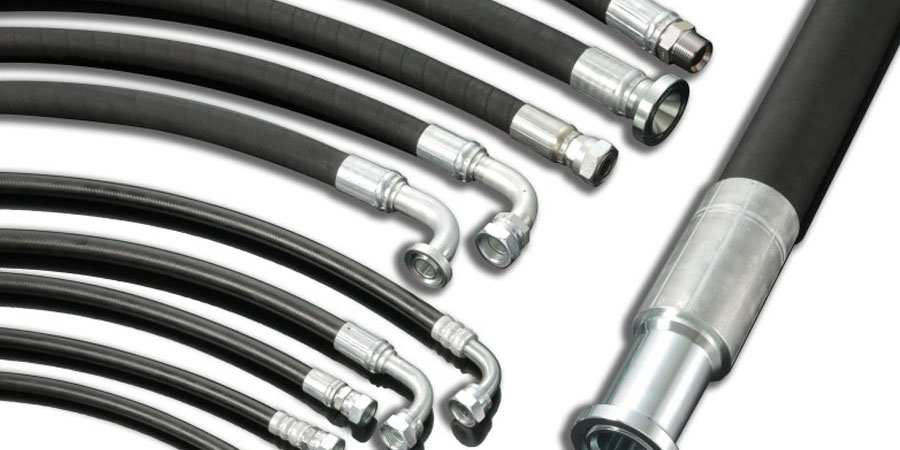
- Submarines and boats
- Industry – food production, factories, steel works
- Excavators
- Road sweepers
- Refuse vehicles
- Agricultural machinery – combine harvesters, tractors etc.
At hydraulic hose Perth-based company Hoseright, our skilled and friendly staff have a combined experience of 75 years in the industry. You can rely on us to help you choose the right fit for all your hose and fittings. Locals and people in surrounding areas have used our efficient services for many years. There’s a reason why they come back and back again. Our team’s passion for their work is unsurpassed. You can therefore always be assured of the highest levels of customer service and advice just when you need them.
We can help you with some insight into what you need for the application you have in mind. What we need to know from you to begin is:
- The maximum flow you need
- The fluid type you’re using
- The length of required hose
- The maximum pressure you need
- Whether there is a need for any hose fittings
- The specific details of what you need your hose to do.
Once we have all this information, we can make recommendations that will suit your needs. Bear in mind that system pressure is arguably the foremost factor when it comes to choosing a hose. It’s crucial to be aware of the exact working pressure of your system. Furthermore, you should always have complete knowledge of any pressure spikes so your hydraulic hose functions at its best. Whether you need a hydraulic hose, fittings or a hydraulic hose crimper, Perth-based Hoseright is with you all the way.
Content SourceExtending the Life-span of your Hydraulic Hose
We’ve all been there. How many times have you experienced, deep cuts, pressure spikes, extreme hose abrasion or kinking? A hydraulic hose has a finite life. By looking after it, it will consequently provide you with a greater service time. In terms of maintenance, it’s easy to overlook paying attention to maintenance until the worst occurs. Lack of hose maintenance can lead to various problems including:

- Potential damage due to contaminants polluting the system
- Cleaning, disposing and replacing any lost hydraulic oil
- Damage to other integral components
- Downtime of machinery
- Potential loss of income
With the above in mind, what can be done to extend the life of your hose while keeping costs as low as possible?
Keep an Eye on Operating Conditions
Generally speaking, the day-to-day conditions your hose is exposed to determines its service life. High or low-temperature extremes accelerate the ageing process. Pressure fluctuations can also wreak havoc on a hydraulic hose. If you’re concerned about the operating conditions of your hose, it’s worth speaking to the experts in terms of your options.
External Damage
To minimize any external damage, carefully inspect your hose on a regular basis, ensuring all clamps are secured.
Bending
If a hydraulic hose is bent in more than one plane, the wire reinforcement twists. This can reduce the service life quite significantly. If you’re concerned about bending, be sure to check that your hose is assembled and routed well. Also, inspect any clamps where the hose may be subject to movement.
If you’re at a loss in terms of what to do about your hydraulic hose problem or you just need some advice, our friendly and professional team at Hoseright can help. Our many years of experience enable us to fully understand how all these issues occur. Additionally, we can help you to prevent any re occurrence in the future. Safety and longevity of parts is our goal. We understand that your business or project isn’t simply a 9-to-5 job. So, this is why we provide you with 24/7 support whenever you need us. Hoseright should be your go-to company for hose fittings Perth.
Monday, February 26, 2018
Hydraulic Hoses: The Facts
It’s easy to take a hydraulic hose for granted. However, have you ever stopped to think about the many aspects that are involved in the design, creation and testing of the best quality hydraulic hoses? In this article, we take a look at some interesting hydraulic hose facts.
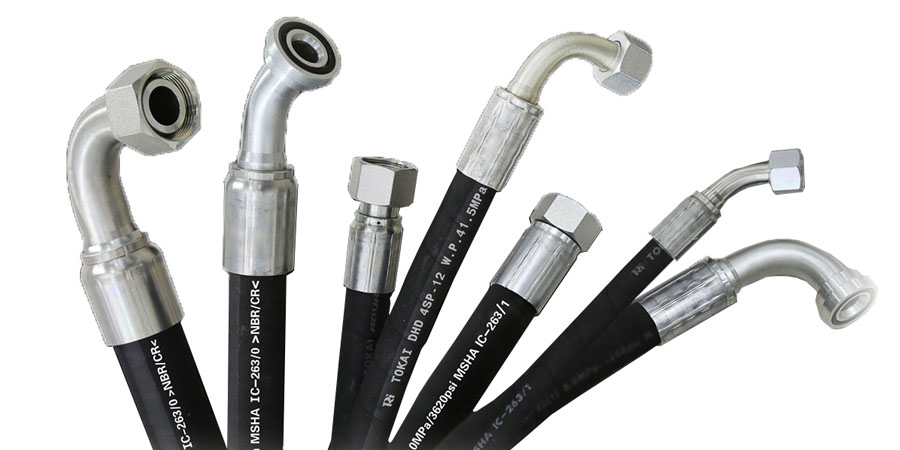
- Hydraulic assemblies and hoses are often made from multiple materials. The most commonly-used primary material of construction is rubber. However, materials tend to differ depending on exact requirements in terms of use.
- Hose assemblies are made up of both a hose and hose fittings. Each different component will be independently rated by working pressure. The lowest maximum working pressure between the hose and fittings is the highest maximum pressure for the entire assembly.
- Spiral hose is considered to be more robust than braided. Spiral hose can also be put under higher pressures than its braided counterpart.
- Contemporary hydraulic hose is usually made up of three parts or more. There should be a flexible inner tube that’s fully compatible with the fluid it’s to carry. Additionally, there is a reinforcement layer. There is also an outer layer that’s often abrasion, weather or oil resistant depending on the environment of use.
- Tube vs. hose. Hose is available in longer lengths and is more flexible than tube. Also, it’s easily installed in tight places, insulates heat better, is less likely to corrode and is also more rapidly fabricated than tube. Tube, on the other hand, is useful for a high-vibration environment, to attach to moving parts and when its routed near a source of heat.
- How long a hydraulic hose lasts depends on various factors. There is no exact answer to how long a hydraulic hose might last. If you’re currently on the look-out for a hydraulic fitting, Perth-based experts Hoseright are available 24/7 to help.
Hoseright is the foremost company in the area specialising in industrial hose products. If you’re looking for air hose fittings, Perth-based Hoseright works around the clock to keep your machinery in tip-top condition. Contact the trusted company for hydraulic repairs Perth-based Hoseright.
Stay Safe during Hydraulic Hose Repairs
Hydraulics systems are important for many operations, from agriculture to construction and industrial plants. Unfortunately, they can also pose serious and even life-threatening hazards if proper care is not taken. This is especially important when repairing hoses, as this requires workers to be in close proximity to the equipment.
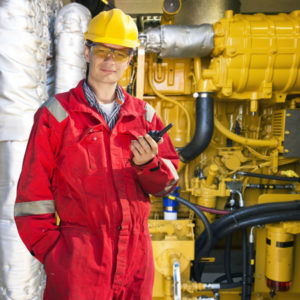
At Hoseright, we’re concerned for the safety of all workers. That’s why we’ve put together this article to help you learn about the potential hazards of hydraulic systems and how to repair and maintain them. If you still feel unsure about working on the hydraulics yourself, you can call our friendly team about our hydraulic hose repair services.
Hydraulic Hazards
Hydraulic systems and hydraulic fluid can present serious hazards in a number of scenarios:
1.Pinhole Leaks
Hydraulic fluid is highly pressurised and the compressed liquid can jet out through tiny leaks, penetrating a worker’s skin or eyes. These are called ‘injection injuries’. They can cause severe injuries ranging from gangrene to blindness. Injection injuries require immediate medical attention and can often result in amputation of the affected limb.
2. Injuries from Hot Fluid
The pressurised fluid in a hydraulic system can also be very hot. If a worker is exposed to hydraulic fluid while removing or adjusting components, or if a hose bursts, they may sustain burns, bruises, cuts, and abrasions.
3.Hose Problems
When an unrestrained hose fails while under pressure it flails around until the hydraulic pressure is exhausted. A whipping hose increases the likelihood of contact with the hot hydraulic fluid. The hose itself can also cause striking injuries. These include concussions, lacerations, and broken bones.
Staying Safe around Hydraulics
Proper maintenance is critical for making sure your hydraulics assembly remains functional and safe. Here are some safety measures to keep you protected when checking, maintaining, and repairing hydraulic hoses.
- Regularly examine the hydraulic lines for leaks and wear.
- When looking for leaks, never run your hand along a hydraulic line –this puts you at risk of injection injuries. Instead, use a piece of cardboard or plexiglass to locate leaks.
- Always wear personal protective equipment (PPE) when performing maintenance on hydraulic systems, including gloves and eye protection.
- Do not rely solely on the hydraulic lift if you work on hydraulic components with the system raised. Set the working unit on blocks as a precautionary measure.
- Unless you are bleeding the hydraulic system, do not run the machine engine when you are servicing it.
- Let the hydraulic system cool before changing lines, connections, filters, or fittings.
- Coat the cylinder rods with a lubricant that provides rust protection.
- Periodically replace filters, and keep hydraulic oil away from contaminants – dirt is the biggest culprit in hydraulic system damage.
- Before removing the cylinders from working units, make sure that the units are resting on the ground, safety stands, or safety blocks and that the engine is shut off.
- Use a chain hoist, floor jack, or another type of assistive device if you need to remove heavy hydraulic pumps or control valves. Many workplace injuries result from people simply trying to lift or move things that are far too heavy for manual labour.
For further assistance with your hydraulic system maintenance, contact the team at Hoseright. We are Perth and Regional WA’s experts in hydraulic hose fittings.
Content Source
Content Source
Monday, January 29, 2018
Hoseright and Ryco National Partnership
Hoseright and Ryco 24∙7 are thrilled to announce a National Partnership! Together we have established a commitment to providing customers with quality hydraulic products and service! Hoseright is now the Perth Ryco 24∙7 mobile service centre, our comprehensive range of Ryco products and extensive market coverage ensures minimal downtime and reliable service every time from our professional and highly trained technicians.
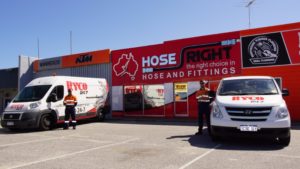
Our entire team here at Hoseright are on call 24 hours a day, 7 days a week offering expert support and thriving to provide every customer with a 5 star service “guaranteed” for all types of hydraulic systems. We don’t just repair; we service and monitor your equipment. Whether it is mining, marine, agriculture, construction or industrial.
The team at Hoseright will be on hand, anywhere, anytime, to offer you our friendly and professional assistance!
Content Source6 Signs You Should Replace Your Hydraulic Hose
Hoses and fittings are central to your hydraulic systems and looking after them is important. Today we’re going to give you some insights into your hydraulic hoses, as well as 6 signs that you should replace your hoses.
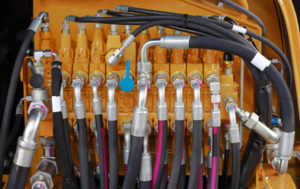
The Life Cycle of Hydraulic Hoses
There is no simple answer to the question ‘how long will my hydraulic hoses last?’ It depends on the quality of the hoses and the hydraulic fittings, as well as how you’re using them and under what circumstances. As a general rule you should replace your hoses and fittings every 1-2 years, but don’t take that as a gospel.
Keep a logbook of all replacements and any equipment failures that occur. Over time, this should give you an accurate idea of the real lifespan of hydraulics hoses in your operation.
Preventative Replacement
As well as scheduled replacements, you’ll need to be vigilant about looking for signs of wear and tear in your hydraulics. In 80% of hose failures, the culprit is external damage such as pulling, kinking, abrasion, or crushing. These stresses don’t always happen uniformly over time. There’s always the chance a hose could be pushed to breaking point well ahead of its scheduled replacement.
Warning Signs
If you notice any of the following signs during a regular check or at any other time, you should replace your hydraulics hoses and/or fittings as soon as possible:
Look Out for Crushed Hoses
Crushed hoses can lead to pressure build up and cause leaks lead to hoses bursting.
Oil Leaks Around Your Hose
These may indicate that the whole assembly needs to be replaced, but you may only need to replace the fitting themselves. Get a professional opinion before deciding.
Exposed Wire
Any exposed wire is a sign that significant abrasion is occurring and that you need to replace the hose.
Extensive Hose Damage
Some small scuffs and nicks in the outer cover of the hose are normal. If you see damage that goes beyond this, it’s time for a replacement.
Kinks in the Hose
Kinks may indicate incorrect routeing with bend radiuses below the minimum specified by the manufacturer. If these kinks show signs of damage, replace your hose. You may be able to re-route if caught early.
Cracked Fittings
If fittings are cracked or corroded they should be replaced. It may be safest to replace the hose too, as the faulty fittings have caused damage. Some white oxidation on fittings is okay, but red rust is a problem.
Hoseright has the hydraulic products and services to minimise your downtime and maximise your safety. For hydraulic hoses and fittings, as well as services and repairs in Perth, contact our team today.
Subscribe to:
Comments (Atom)